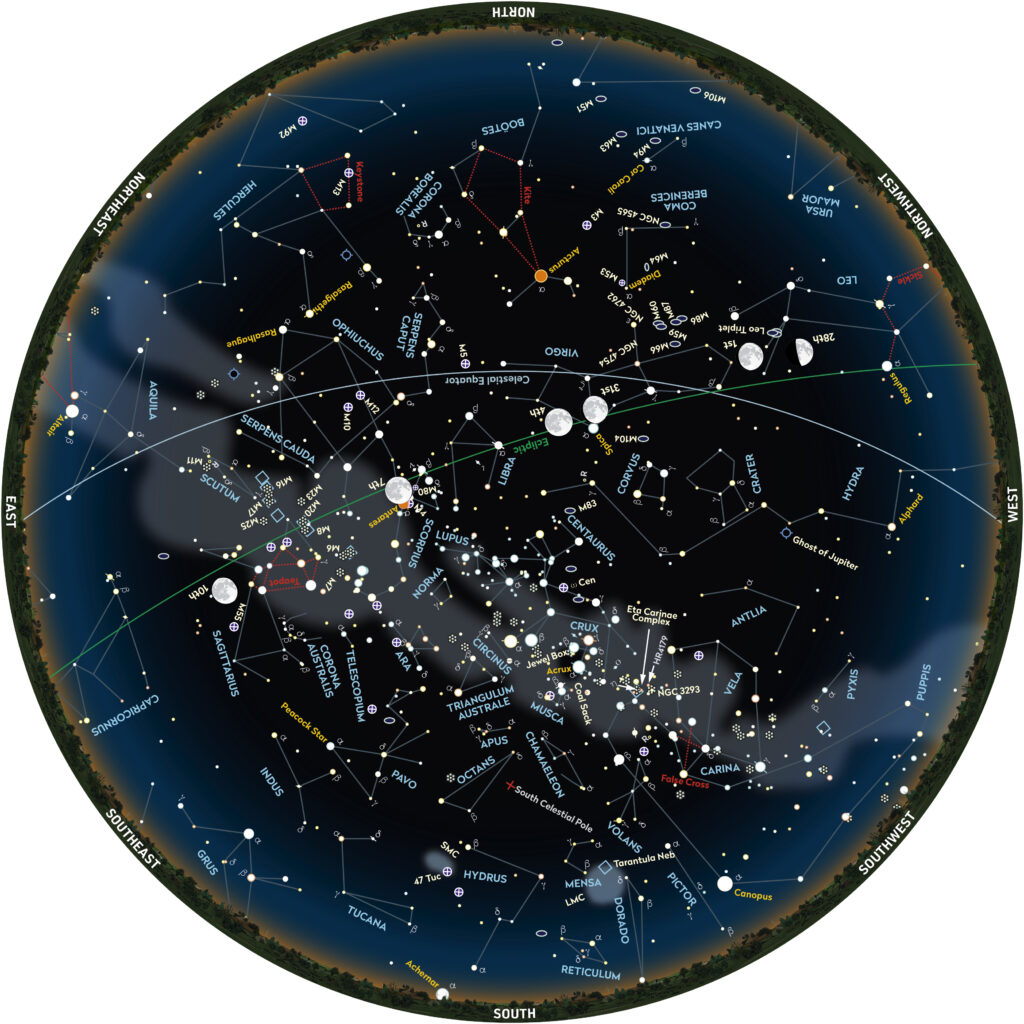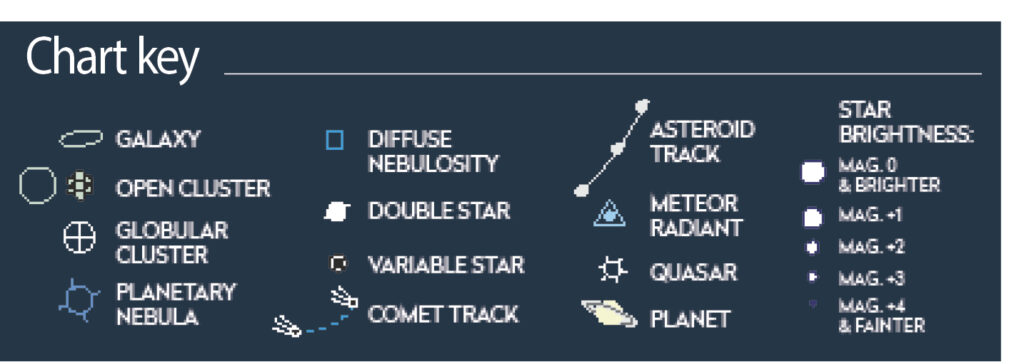Catch the Moon escorting five planets across the sky and spy the sparkling Gem Cluster in Carina


When to use this chart
1 May at 00:00 AEST (14:00 UT)
15 May at 23:00 AEST (13:00 UT)
31 May at 22:00 AEST (12:00 UT)
The chart accurately matches the sky on the dates and times shown for Sydney, Australia. The sky is different at other times as the stars crossing it set four minutes earlier each night.
MAY HIGHLIGHTS
This month sees all five naked-eye planets visited by the Moon. On 14 May, Saturn and the Moon rise together around 01:00 (local time). On 17 May its thin crescent is visible 8° above Jupiter in the eastern predawn sky. The next day, it is 5° below Jupiter, with Mercury 3° to the right. The Moon then passes the Sun, reappearing in the evening. On 23 May there is a brilliant conjunction with its thin phase 4° below Venus. On the following two nights see it 7° from reddish Mars.
STARS AND CONSTELLATIONS
Riding high in the evening sky is one icon of the Southern Hemisphere, the Southern Cross (Crux). Crux has the most southerly first-magnitude star, Acrux, and is also the smallest constellation. It marks the most southerly part of the Milky Way too. The region between Crux and the False Cross asterism (20° westward) contains a wealth of star clusters, capped off by the Eta Carinae star cluster/nebula complex, clearly visible to the unaided eye and breathtaking through binoculars.
THE PLANETS
The evening sky this month belongs to Venus and Mars. Venus can’t be missed low in the west-northwest, with Mars to its upper right. The planets draw closer together during May, both passing the twin stars of Castor and Pollux. Saturn rises around midnight (mid-month), with Neptune following two hours behind. Having now risen out of the dawn glow, Jupiter returns to the morning sky. Mercury follows hot on its heels and is best observed in the latter half of May.
DEEP–SKY OBJECTS
This month, a trip to Carina. Only 2° northwest of the Eta Carinae Nebulae lies NGC 3293 (RA 10h 35.8m, dec. –58° 13’), one of the brightest (mag. +4.7) and most striking open clusters in southern skies. Named the ‘Gem Cluster’, it’s dominated by a dozen seventh-magnitude stars, all a brilliant blue except for an outstanding red member on the southwest corner. This compact, 5-arcminute group appears roughly square in shape.
Half-way between NGC 3293 and Eta Carinae is the double star HR4179 (RA 10h 39.0m, dec. –58° 49’), with components of mag. +6.2 and +8.0 separated by a comfortable 25 arcseconds. Lying within the same low-power field (0.4° south) is another double, HR4177, with its mag. +4.9 and +7.5 members closer at 15 arcseconds. Both of their primaries are red supergiants, offering wonderful colour contrast to their white companions.